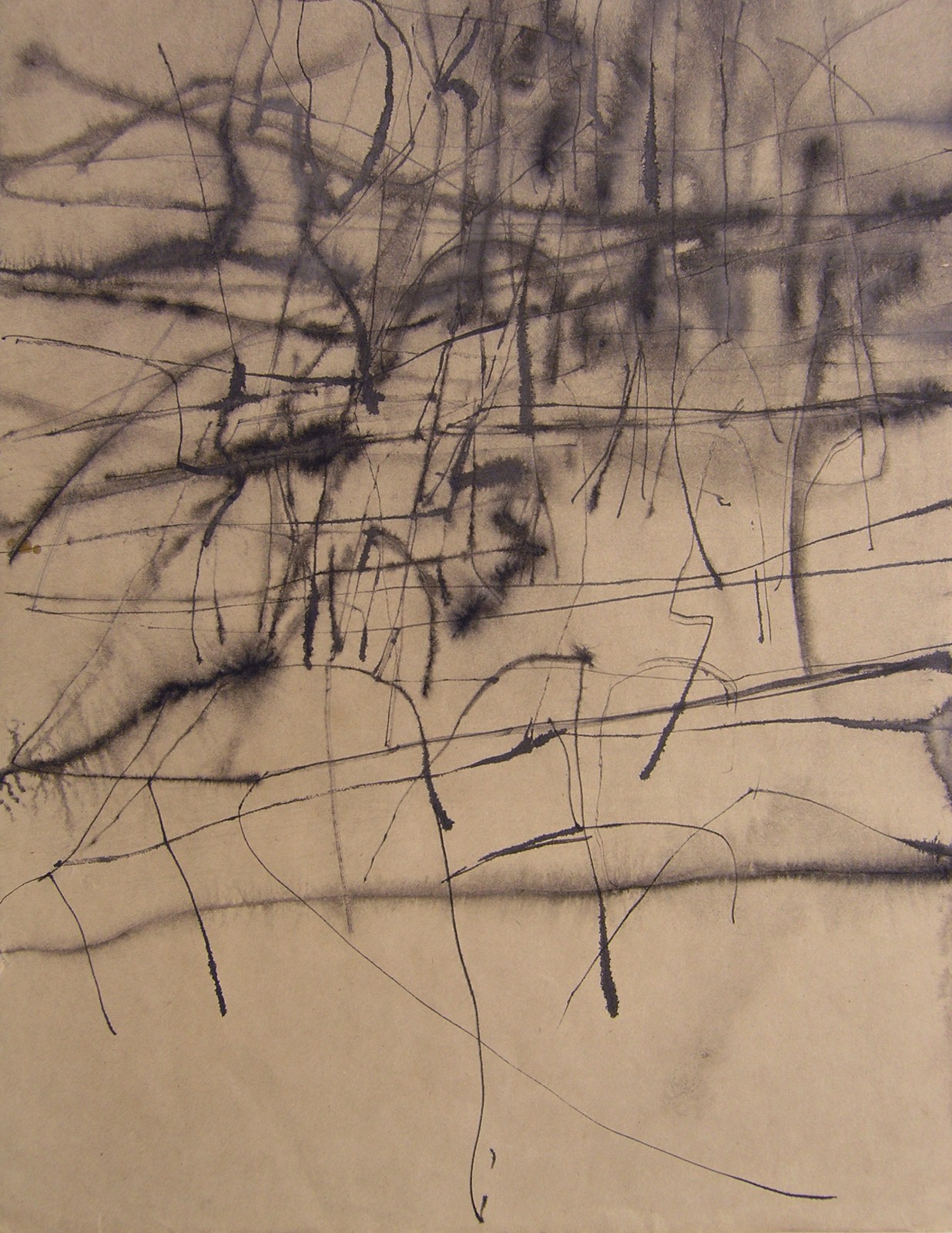
Untitled, ca. 1965
Ink on paper
12 2/5” x 9 4/5”
Nasreen Mohamedi
Talwar Gallery | New York
“Pull With a Direction,” a lovely and engrossing show at Talwar Gallery, presents a compressed, in-a-nutshell version of the development of Nasreen Mohamedi (1937-1990), one of the most original modernist artists of post-World War II India. While following the trajectory of the much larger retrospective at the Met Breuer in 2016, this show’s 25 works is dominated by the early drawings and some prints of the 1950s and ’60s, when Mohamedi had various styles and materials under consideration. (The years to come are signaled by a handful of photographs, paintings and later abstract drawings.) There’s an alluring wildness to the proceedings, as different artists often emerge from work to work.
During those years, Mohamedi was alternately describing or distilling natural forms substantiating anew how crucial nature — especially trees and plants — are as a path to abstraction. The delicate linearity of her later classic drawings is apparent in a series of nervous twigs and branches erupting from a pale pink earth in an ink-and-watercolor work dated around 1960. In pieces from about five years later, lines thicken and tangle, in wet-dry undergrowths of ink and watercolor with graphite and pastel that involve erasures as much as additive marks. One drawing creates the sensation of looking through an expanse of unruly fishing net at the gray-wash wall of an oncoming wave. Linearity is submerged in a dark atmospheric aquatint, also from around 1965, whose hanging forms suggest Chinese lantern flowers seen in a nocturnal photograph. By the late ’60s, her lines are turning toward seismographic autonomy, but a sense of natural disarray and intimations of landscapes persist.
The show implies that the significance of Mohamedi’s photographs — which she took throughout much of her career but never exhibited during her lifetime — cannot be overestimated, even though there are only four here. Two capture the warp and weft of textiles on looms; one shows dry twigs in packed earth, and another focuses on a shadowy, low-lying form that might be Post-Minimalist sculpture. Effortlessly combining abstraction and representation, expressivity and precision, mystery and fact, these images are as important as anything she did.
-Roberta Smith